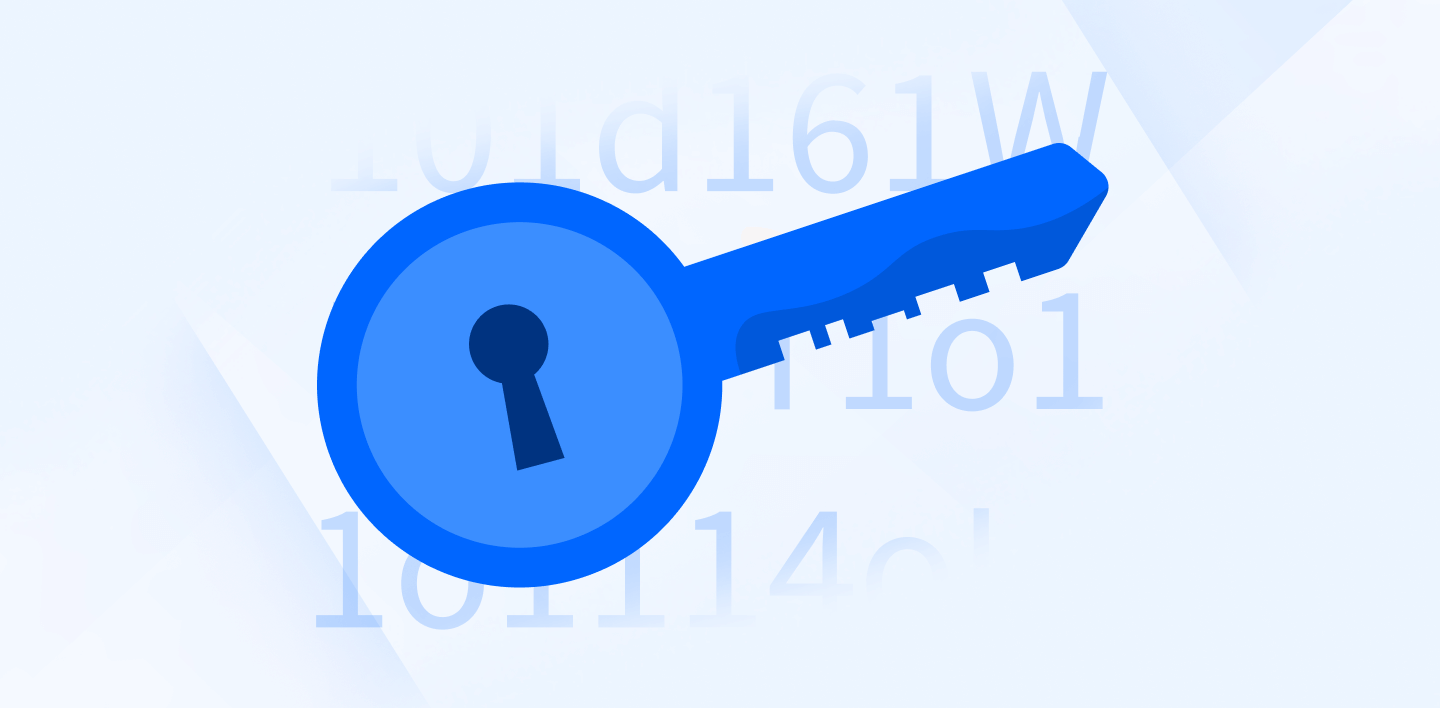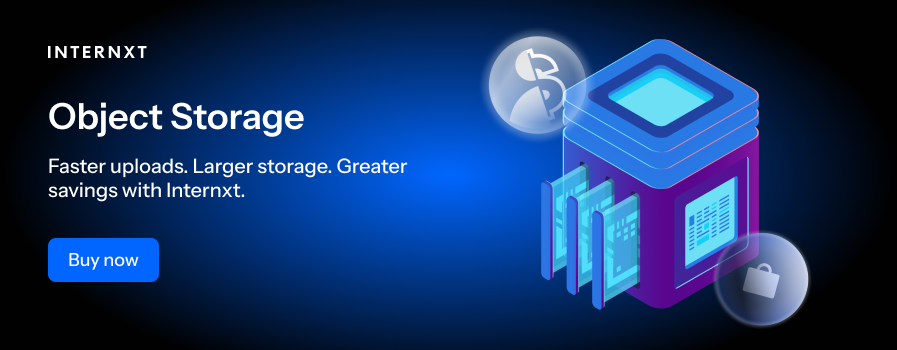What is Data Encryption and Why It’s Recommended for Really Safe Online Security

Encryption has come a long, long way over the last few years. Something once reserved only for militaries and governments, encryption has been made super accessible and has become standard practice in the tech industry. Whether it’s texts, photos, or word docs - it can, and should, be encrypted.
Put simply, encryption scrambles any file sent or stored online into unreadable nonsense that can only be translated (or decrypted) by a user with a key.
Now not all encryption processes are equal, some are newer and more secure than others, such as the quantum cryptography used in Internxt cloud storage while some are better at certain applications than others. That said, some encryption is always better than none when it comes to protecting your information and privacy online.
Encryption has changed the game in regards to online security and to know just how big of a game-changer encryption is for industries such as private cloud storage solutions, we need to understand how it works.
How Data Encryption Works
Basically, encryption is the scrambling of data into an unreadable form.
More specifically data encryption is the process of converting readable plaintext (think the words on a doc) to incomprehensible text (something like this: ej2fn#9KsQ@5n) called ciphertext.
In order to convert or decrypt the ciphertext back to its plaintext form, users must have a cryptographic key. This key is a set of mathematical values that both the sender and the recipient of an encrypted message agree on before passing encrypted information to one another.
Data can be encrypted for storage or when it's “at rest” or it can be encrypted for transmitting or “in transit”. You can encrypt any kind of data, right from financial details to customer data collected via a sales CRM solution, or even top-secret data.
These files are encrypted or encoded with the help of encryption algorithms. These algorithms are predictable and logical but extremely complex. The more complex the encryption algorithm, the stronger and more tamper-proof the encryption.

Types of Encryption: Symmetric and Asymmetric
There are two main types of encryption, and both boil down to how they generate an encryption key:
-
Symmetric encryption requires the use of only one “secret key”. All users use the same, exact key for encrypting and decrypting information. All parties must have the same key in order to encrypt and decrypt data.
-
Asymmetric encryption involves two keys: one for encryption and one for decryption. The encryption key is distributed publicly, called a “public key”, and anyone can use it to encrypt information. The decryption key is unique to the user and kept private, called a “private key”. Both keys are needed to access asymmetrically encrypted information.
For more information about encryption and cryptography, we also have a detailed list of common cryptography terms you can check out.
The Benefits of Encryption
There are very few downsides to data encryption. In general, encryption creates a safer web environment for everyone involved. The major benefits of encryption are:
Privacy
If you are concerned with information being accessed or intercepted or the privacy of your privacy of your photos, files, or documents, encryption makes it nearly impossible for Peeping Toms to catch a glimpse of your precious data.
Cooperation, hackers, Internet Service Providers, advertising companies, and governments have been known to intercept, collect, and store user data for various (shady) reasons.
Regulation
Many industries are now required to encrypt stored or shared data by law. HIPAA, FERPA, FCPA, PCI-DSS, and GDPR are all pieces of legislation that require data encryption of some kind in order to protect users' right to privacy.
Authentication & Safe Browsing
Encryption, especially “public key” encryption can be used to make the recipient or sender of the information who they say they are.
Information Security
Especially useful for companies or individual users sharing confidential and copyrighted data, encryption drastically lowers the risk of data breaches. Even if an encrypted message or encrypted hard drive is acquired, no one will be able to access the raw, plaintext information stored on the device or in the communication.
Hack Prevention
You’ve seen news covering large data breaches affecting up to millions of innocent consumers. The reason these large data banks became targets of cybercrime or espionage is their instance to store consumer data in a raw and unencrypted form.
Data Integrity
On-path attacks and the like have the ability to alter and access information in transit. Basically, a hacker either impersonates the receiver or transmitter of a message or intercepts the communication en route. Data encryption allows you to verify if your data has been altered or tampered with on its way to or from its destination. All these benefits can also be achieved through a reputed SSL certificate, like wildcard SSL certificate, multi-domain SSL, etc.
Encryption Algorithms: Are Some Better Than Others?
There is no shortage of encryption algorithms out there today. Each one has its own benefits and shortcomings. When picking out a security service, look for providers using more modern forms of encryption. The more recent or consistently upgraded algorithm, the fewer time hackers have to break or counter the algorithm.
To name just a few common algorithms: AES, DES, 3-DES, SNOW, Twofish, RSA, Elliptic curve cryptography, RC4, QUAD, Diffie-Hellman, ECC, El Gamal, DSA.
For example, all data stored with Internxt is encrypted using post-quantum Kyber-512 cryptography. Our encryption is zero-knowledge, so only you have access to the encryption keys for total privacy.
AES is safe, fast, and super flexible offering multiple keys lengths. The longer the key, the longer it would take to crack. This means that the most powerful processor around now would need twice the age of the universe to decrypt even just a small file. AES is a great choice for most users looking to protect their files stored online or create an encrypted hard drive.
Can Encryption Be Broken?
Encryption is not 100% safe, but it’s close. Hackers and cybercriminals can employ brute force attacks.
A brute force attack is essentially guessing the encryption key or password of a file. These are perpetrated with the help of programs constantly generating and attempting random attempts over and over again until one attempt succeeds.
Another method for cracking encryption is side-channel attacks. These attacks exploit errors in system or algorithm design. Side-channel attacks don’t attack the encrypted information directly but the computer systems that hold the encryption key. The goal of these attacks is to acquire the key and then enter the encrypted data just as the intended user would.
These types of intrusions are becoming less frequent as data encryption algorithms become more advanced and complex.
The Future Applications of Encryption
Encryption is only going to get stronger, better, and more complex over the coming years. What new technologies and services it will complement is anybody’s guess.
In development are a few forward-looking strategies and practices such as honey encryption, facial recognition encryption, and homomorphic encryption. An encryption revolution may well be underway in the field of quantum cryptography.
Quantum cryptography proposes the use of photons of light while harnessing the principles of quantum physics in order to send information between participants. Essentially, data would be transported by light. This would be a whole new type of encryption, as light can’t be intercepted, cloned, or reproduced.
Quantum cryptography promises to make traditional encryption obsolete, this is why Internxt has become the first cloud storage to implement post quantum cryptography for Internxt Drive, and its future Mail, Meet, VPN, and Antivirus products.

In the near future, it’s safe to say that encryption has tons of use potential in Web3, the decentralized internet of tomorrow. At Internxt, encryption is being used as the backbone of its Web3 cloud storage service.
Reliable, secure, and private storage and communication will become the cornerstones of a fair and equitable internet. If Web3 is to finally take over and break Big Tech’s monopoly on the internet, encryption will most likely take center stage and have a huge role to play.

